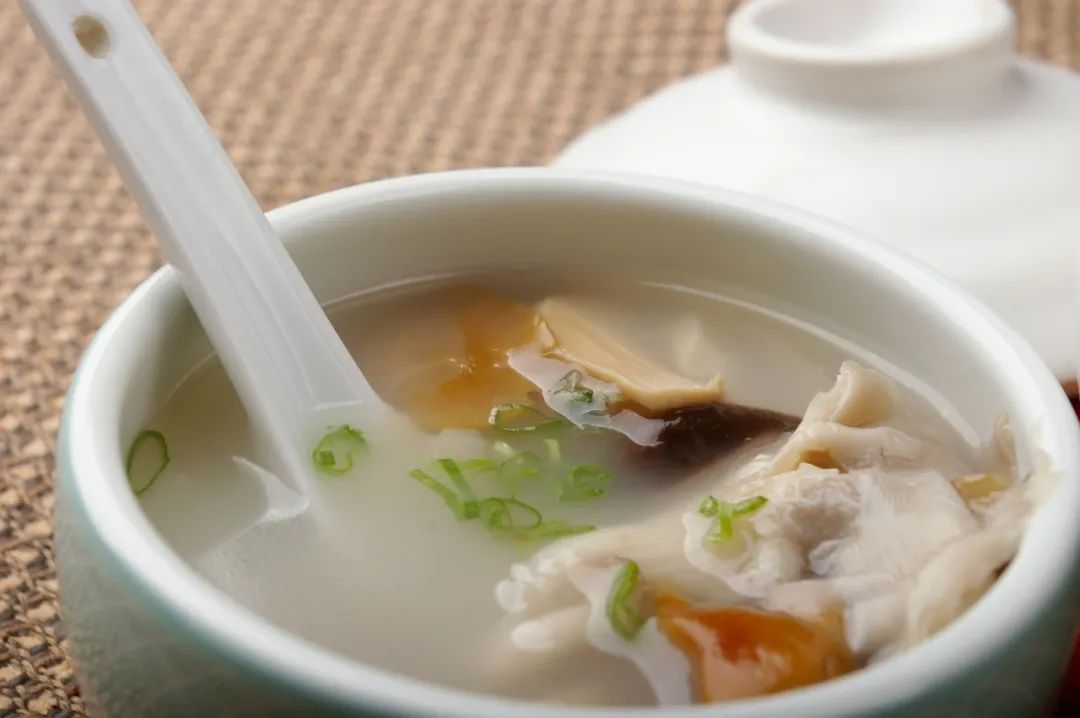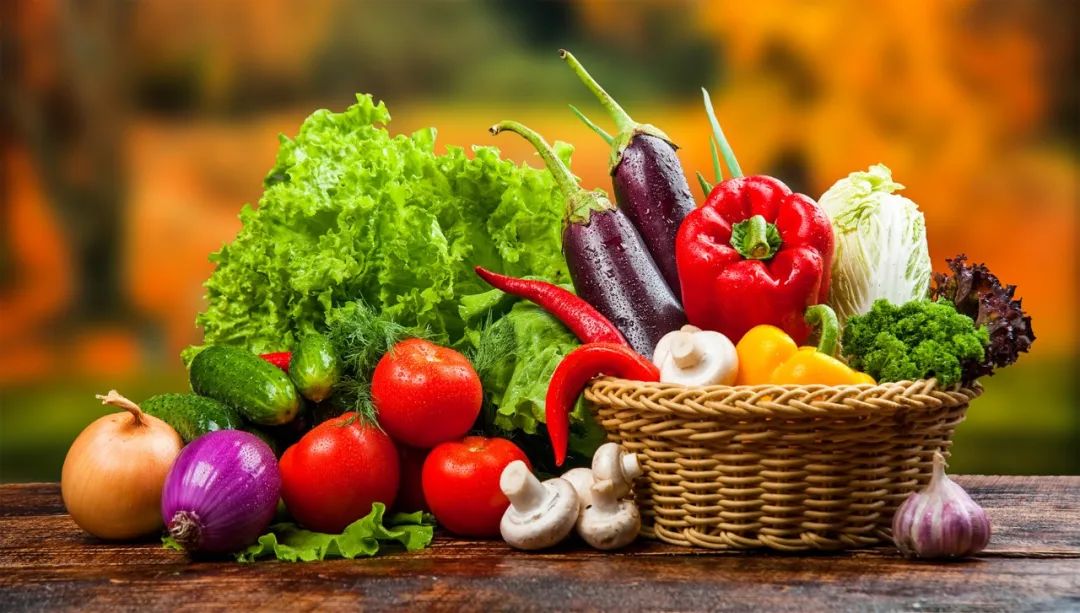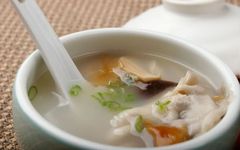Traditional Chinese medicinal cuisine, abbreviated as medicinal cuisine, refers to a special dietary practice that combines various medicinal herbs (zhongyao) with food according to certain principles, guided by the theories of Traditional Chinese Medicine (TCM). It employs traditional cooking techniques and modern processing methods to create dishes that are unique in flavor, aroma, appearance, and efficacy, serving purposes such as disease prevention, treatment, rehabilitation, and health maintenance (“Chinese Medicinal Cuisine Differentiation and Treatment”, People’s Health Publishing House, 2002).Medicinal cuisine integrates the properties of medicinal herbs with the flavors of food, allowing the medicinal properties to enhance the food’s benefits, creating a synergistic effect.
Exploring Medicinal Cuisine Through the Ages

TCM places great emphasis on the close relationship between dietary regulation and health longevity. The “Huangdi Neijing” advocates the principle of recovery after illness: “Grains, meat, fruits, and vegetables should be consumed in moderation to avoid excess, which can harm the body’s balance.” Sun Simiao advised that one should “understand the illness and treat it with food; if food therapy fails, then resort to medicine,” highlighting the importance of medicinal cuisine in health maintenance and disease recovery.
The development of medicinal cuisine has a historical timeline that closely follows the theoretical development of TCM. It originated during the Qin and Han dynasties, developed during the Jin and Tang dynasties, flourished during the Song and Yuan dynasties, and matured during the Ming and Qing dynasties. The “Huangdi Neijing” from the pre-Qin period already included medicinal cuisine formulas such as Wu Zhi Gu Guo (Black Fish Bone) and Lan Cao Tang (Orchid Soup) for treating diseases. In the Eastern Han period, Zhang Zhongjing’s “Jinkui Yaolue” recorded the use of Gan Mai Da Zao Tang (Licorice, Wheat, and Jujube Soup) for treating organ disorders and Dang Gui Sheng Jiang Yang Rou Tang (Angelica and Ginger Lamb Soup) for postpartum abdominal pain. During the Jin and Tang periods, the theory and application of medicinal cuisine saw significant development. Ge Hong’s “Zhou Hou Bei Ji Fang” from the Eastern Jin recorded the use of seaweed wine for treating goiter (thyroid enlargement). Sun Simiao’s “Bei Ji Qian Jin Yao Fang” from the Tang dynasty first established the “food therapy” section, proposing the important idea that “a physician must first understand the source of the illness and treat it with food; if food therapy fails, then resort to medicine.” Meng Shen’s “Shi Liao Ben Cao” from the Tang dynasty described food properties and dietary recommendations, establishing a complete system of food therapy and medicinal cuisine. The Song, Jin, and Yuan periods were crucial stages in the development of medicinal cuisine in China. The Song dynasty’s “Tai Ping Sheng Hui Fang” specifically included a section on food therapy, listing numerous food therapy recipes such as Apricot Kernel Porridge and Asparagus Cakes. The Yuan dynasty’s Hu Si Hui’s “Yin Shan Zheng Yao” introduced over a hundred medicinal cuisine recipes and analyzed the importance of diet in disease prevention from a nutritional perspective, becoming the first nutritional monograph in China. During the Ming and Qing periods, the study of medicinal cuisine gradually matured, with a plethora of writings emerging. The Ming dynasty’s “Ben Cao Gang Mu” provided detailed descriptions of medicinal porridge, categorizing them by efficacy such as relieving thirst, stopping diarrhea, reducing edema, nourishing the liver and kidneys, and regulating the spleen and stomach. The Ming dynasty’s “Jiu Huang Ben Cao” included edible wild vegetables in the category of medicinal cuisine, making its application more popular and widespread. Wang Mengying’s “Sui Xi Ju Yin Shi Pu” from the Qing dynasty advocated for moderation in diet, emphasizing the importance of identifying one’s constitution and dietary restrictions. This indicates that the principle of differentiation in treatment had been applied to food therapy, and the study of TCM medicinal cuisine was gradually maturing.
The Four Qi and Five Flavors for Nourishing Body and Mind
Medicinal cuisine, like TCM, is based on the theory of Yin and Yang, adopting a holistic view centered on the five organs, and relies on the Four Qi and Five Flavors to adjust the body’s Yin, Yang, Qi, and blood to achieve health and disease-free living.Medicinal cuisine is prepared by combining medicinal herbs and food, thus possessing the Four Qi and Five Flavors.The Four Qi refers to the four different properties: cold, cool, warm, and hot. For example, winter melon, bitter melon, loofah, kelp, tofu, and duck meat are considered cold and cool in nature, and when combined with herbs like Huo Xiang (Agastache), Ju Hua (Chrysanthemum), Bo He (Mint), Xia Ku Cao (Selfheal), Bai He (Lily), and Jin Yin Hua (Honeysuckle), the resulting medicinal cuisine can clear heat, drain fire, and cool the blood. Glutinous rice, chestnuts, lamb, beef, dog meat, chicken, pigeon, lychee, and brown sugar are warm and hot foods, and when paired with spices like Gui Pi (Cinnamon), Yi Zhi Ren (Alpinia), Gao Liang Jiang (Galangal), Dang Gui (Angelica), Ren Shen (Ginseng), Xie Bai (Garlic Chives), Chen Pi (Dried Tangerine Peel), Hei Jiao (Black Pepper), Long Yan Rou (Longan), and Fo Shou (Buddha’s Hand), the medicinal cuisine can warm the interior, dispel cold, and tonify Yang.The Five Flavors refer to pungent, sweet, sour, bitter, and salty. The pungent flavor promotes Qi circulation and blood flow, and for those with Qi stagnation and blood stasis, rose tea can be used; for wind-cold colds, scallion porridge or ginger sugar drink can be chosen. The sweet flavor has nourishing, harmonizing, and calming effects; for those with spleen and stomach Qi deficiency, red date porridge can be used, and for those with insufficient stomach Yin, rock candy stewed with white fungus can be chosen. The sour flavor has astringent and consolidating effects; for those with Qi deficiency and spontaneous sweating or persistent diarrhea, Wu Wei Zi (Schisandra) or Wu Mei (Mume) can be added to the diet. The bitter flavor can drain heat and dry dampness; for heat or damp conditions, cold dishes made with bitter melon, stir-fried water chestnuts, or stir-fried thistle can be consumed. The salty flavor can soften hardness and promote bowel movements; for heat-induced constipation or scrofula, kelp and pork rib soup or Longma Tongzi chicken can be selected.TCM categorizes human constitution into nine types, and when selecting medicinal cuisine, one can combine their constitution with the Four Qi and Five Flavors of the cuisine for a comprehensive consideration.Those with Yang deficiency should consume more warming foods such as ginger, beef, lamb, pepper, dog meat, chicken, leeks, scallions, and longan. Those with Yin deficiency should eat more cooling and nourishing foods such as winter melon, lily, pear, duck egg, milk, white fungus, duck meat, sea cucumber, and bird’s nest. Those with Qi deficiency should consume more Qi-tonifying foods like Huang Qi (Astragalus), red dates, shiitake mushrooms, and white lentils. Those with phlegm-damp constitution should eat more Chen Pi (Dried Tangerine Peel) and white radish to promote Qi and resolve phlegm. Those with damp-heat constitution should consume more foods that drain dampness and clear heat, such as winter melon, coix seed, purslane, and adzuki beans. Those with blood stasis constitution should eat more hawthorn, kumquat, and mustard to regulate Qi and blood. Those with Qi stagnation should consume more black beans, kelp, nori, and carrots, which have blood-activating, dispersing, Qi-moving, and liver-soothing properties. Those with special constitutions should maintain a light and balanced diet, avoiding foods that may trigger allergies.

Precautions for Consumption
The “Ling Shu: Five Flavors” states that for those with spleen disorders, it is advisable to eat millet rice, beef, jujubes, and sunflower seeds; for heart disorders, it is advisable to eat wheat, lamb, apricots, and garlic; for kidney disorders, it is advisable to eat yellow soybeans, pork, chestnuts, and mint; for liver disorders, it is advisable to eat sesame, dog meat, plums, and leeks; for lung disorders, it is advisable to eat yellow millet, chicken, peaches, and scallions. However, there are also some dietary taboos when consuming medicinal cuisine, mainly concerning food incompatibilities and disease-related restrictions.Food incompatibilities can be divided into two types: one is the incompatibility between medicinal herbs and food; ancient texts mention that Bai Zhu (Atractylodes) is incompatible with peaches, plums, and garlic, while Ren Shen (Ginseng) is incompatible with tea and radishes; the other is the incompatibility between different foods, such as persimmons and pears being incompatible with crabs, and soft-shelled turtle being incompatible with amaranth, honey being incompatible with scallions, and chicken being incompatible with yellow eel.Disease-related restrictions mainly refer to certain foods that should not be consumed by individuals with specific diseases. For example, those with blood disorders should avoid excessive salt, those with bone disorders should avoid excessive bitterness, those with muscle disorders should avoid excessive sweetness, and those with tendon disorders should avoid excessive sourness. External symptoms like sores and ulcers should avoid seafood, mushrooms, etc. Heat illnesses should not consume warming foods, while Yang deficiency and cold conditions should avoid cooling foods. Additionally, many foods can trigger certain chronic diseases or exacerbate conditions, which should be taken seriously. Seafood such as hairtail, yellow croaker, shrimp, and crabs can easily trigger allergic diseases like asthma and urticaria; poultry such as roosters, chicken heads, pork head meat, goose meat, chicken wings, and edible fungi may trigger Yang hyperactivity headaches, liver wind dizziness, and skin diseases; vegetables like bamboo shoots and mustard greens can trigger skin sores.Medicinal cuisine can take many forms, whether as tea, dishes, or porridge. Based on individual constitution, seasonal changes, and reasonable combinations, even common cooking methods can yield health benefits when consumed regularly. Medicine is for consumption, and food and medicine complement each other; it is advisable to adopt medicinal cuisine as a lifestyle, encouraging everyone to move from the pharmacy to the kitchen, as health begins with “eating”.

Source|China Traditional Chinese Medicine News Author: Song Jiemin, Zhejiang Chinese Medical University
Editor|Shan Lai Editing Team

